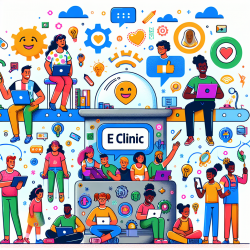Introduction
In the realm of speech-language pathology and child development, the quest for optimal outcomes is unending. Practitioners are continually seeking ways to refine their skills and enhance the experiences of the children they serve. A recent study titled "Comparison of the number of supervisors on medical student satisfaction during a child and adolescent psychiatry rotation" provides valuable insights that can be applied to our field. This blog explores the study's findings and offers practical ways to implement these insights into your practice.
Understanding the Study
The study conducted by Mascioli, Robertson, and Douglass (2016) aimed to determine whether the number of supervisors assigned to medical students during a one-week child and adolescent psychiatry rotation affected their satisfaction. The study involved 110 third-year medical students, who were divided into groups based on whether they had one or two primary supervisors.
Interestingly, the results indicated no significant difference in overall student satisfaction between those with one or two supervisors. However, students with one supervisor reported improved assessment reports and progress notes, highlighting the importance of focused, individualized feedback.
Applying the Insights
As practitioners, these findings can guide us in enhancing our own supervisory and teaching methods. Here are some practical steps to consider:
- Personalized Feedback: Emphasize the quality of feedback over quantity. Tailored, constructive feedback can significantly enhance learning and skill development.
- Consistent Supervision: While multiple perspectives can be beneficial, consistency in supervision may lead to better rapport and understanding between supervisor and student, fostering a more conducive learning environment.
- Structured Learning Environment: Ensure that the learning environment is well-organized, with clear objectives and expectations. This can enhance student satisfaction and learning outcomes.
Encouraging Further Research
While the study provides valuable insights, it also highlights the need for further research. Future studies could explore the impact of supervisor quality, the role of diverse clinical settings, and the influence of the learning environment on student satisfaction and outcomes.
As practitioners, staying informed about the latest research and incorporating evidence-based practices into our work is crucial. By doing so, we can continue to improve the services we provide and create better outcomes for the children we serve.
Conclusion
In conclusion, the number of supervisors may not significantly impact student satisfaction, but the quality of supervision and the learning environment are crucial. By focusing on personalized feedback, consistent supervision, and a structured learning environment, practitioners can enhance their skills and improve outcomes for children.
To read the original research paper, please follow this link: Comparison of the number of supervisors on medical student satisfaction during a child and adolescent psychiatry rotation.










